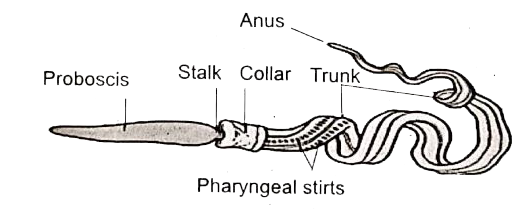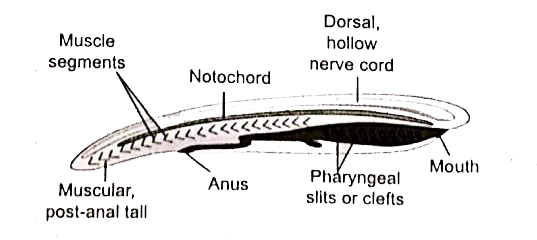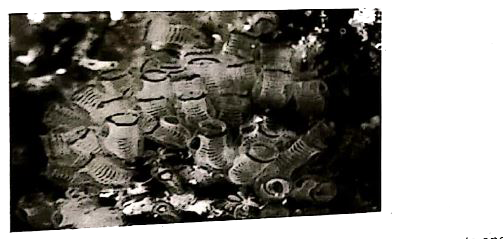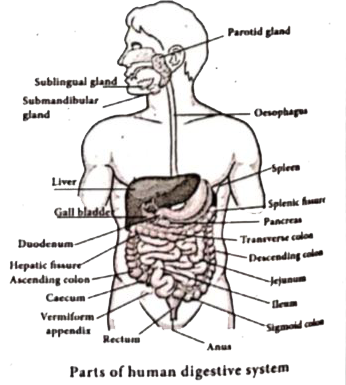Saved Bookmarks
Explore topic-wise InterviewSolutions in .
This section includes InterviewSolutions, each offering curated multiple-choice questions to sharpen your knowledge and support exam preparation. Choose a topic below to get started.
| 901. |
Question : Mount the peel of a Rheo leaf in water on a slide and examine cells under the high power of a microscope. Put a strong solution of sugar or salt on the mounted leaf on the slide. Wait for a minute and observe under a microscope. What do we see? |
|
Answer» Solution :The green coloured chloroplasts are seen in the mounting. Due to strong SUGAR or salt solution on the outer side of the CELL, the water moves out due to concentration difference. Exosmosis takes place and this causes cells to shrink. SHRINKAGE of the contents of the cell AWAY from the cell WALL is called plasmolysis. In this activity plasmolysis can be observed. Now place some Rheo leaves in boiling water for a few minutes. This kills the cells. Then mount one leaf on a slide and observe it under a microscope. Put a strong solution of sugar or salt on the mounted leaf on the slide. Watt for a minute and observe it again. |
|
| 902. |
Question : Describe the three parts of small intesting. |
|
Answer» Solution :The small INTESTINE is the longest part of the alimentary canal. It COMPRISES of 3 parts - duodenum, jejunum and ileum. Duodenum is C-shaped and receives the BILE duct (From liver) and pancreatic duct (from pancreas). Jejunum is the middle part of the small intestine. It is a short region. It contains the enzymes like sucrase, maltase, lactase and LIPASE. Ileum forms the lower part of the small intestine. It is the longest part of the small intestine. It contains minute finger like projections called villi. Absorption of food takes place here. |
|
| 903. |
Question : Moss (Funaria) is an example of Bryophyta. |
|
Answer» |
|
| 904. |
Question : Mosquitoes feed on many ..........animals, including human being. |
|
Answer» |
|
| 905. |
Question :Describe the structure of plastids. |
|
Answer» Solution : (1) Plastids have internal matrix called STROMA. (2) The stroma has numerous membrane layers within it. (3) There is own DNA of plastids and also ribosomes. (4) These are spindle shaped and contain photosynthetic pigments. |
|
| 906. |
Question : More than one cause are responsible for the occurrence of diseases. |
| Answer» Solution :Normally our body has to face several infectious pathogens daily, but all these pathogens do not affect us. CAUSES of different levels are responsible for the occurrence of a definite disease. e.g., The pathogens responsible for a particular disease may attack in a very LARGE number. Against such attack poor FUNCTIONING of our immune system of the body, lack of GOOD nutritive food or certain genetic mutation may be the causes for the disease to sometimes the lack of public health services may also be the cause. Thus, more than one cause are responsible for the occurrence of diseases. | |
| 907. |
Question : Describe the role played by the lysosomes. Why are these termed as suicide bags? How do they perform their function ? |
|
Answer» Solution :(1) Lysosomes are membrane-bound sacs that contain digestive enzymes in them. (2) These enzymes are very powerful and can digest all types of organic materials. (3) They play a role of cleaning up and ALSO protecting against any foreign particles. ( 4 ) They are called as suicide bags because, if the cell is damaged, worn out or functionless, they burst open. (5) The enzymes within them digest the own cell. This MECHANISM is for removing any unwanted cell of the body. By BURSTING open and releasing the digestive enzymes lysosomes carry out lysis or DESTRUCTION. |
|
| 908. |
Question : Mollusca: |
|
Answer» Solution :(i) SOFT bodied animals without segmentations. (II) The BODY is covered by a mattle and a shell. (III) Respiration is carried through gills or lungs or both. |
|
| 909. |
Question : Describe the processes involved in the water cycle? |
|
Answer» Solution :Water cycle or hydrological cycle is the continuous movement of water on earth. In this process, water moves from one reservoir to another, from river to ocean or from ocean to the atmosphere by processes such as evaporation, SUBLIMATION, transpiration, condensation, precipitation, surface runoff and infiltration, during which water converts itself to various forms like liquid, solid and vapour. Evaporation: Water evaporates from the surface of the earth and water bodies such as the oceans, seas, lakes, ponds and rivers turn into water vapour. Sublimation: Ice sheets and ice caps from north and south poles, and icecaps on mountains, get converted into water vapour directly, without converting into liquid. Transpiration: Transpiration is the process by which plants release water vapour to atmosphere through SMALL pores in leaves and stems. Condensation: At higher altitudes, the temperature is low. The water vapour present there condenses to form very tiny particles of water droplets. These particles COME close together to form clouds and fog. Precipitation: Due to change in wind or temperature, clouds combine to make bigger droplets, and pour down as precipitation(RAIN). Precipitation includes drizzle, rain, snow and hail. Run off: As the water pours down, it runs over the surface of earth. Runoff water combines to form channels, rivers, lakes and ends up into seas and oceans. Infiltration: Some of the precipitated water moves deep into the soil. Then it moves down and increases the ground water LEVEL. Percolation: Some of the precipitated water flows through soil and porous or fractured rock , Infiltration and percolation are two related but different processes describing the movement of water through soil. |
|
| 911. |
Question : Describe the process in details by which an Amoeba obtains its food. |
|
Answer» Solution :(1) AMOEBA obtains its FOOD by endocytosis. (2) The FLEXIBLE cell membrane of the amoeba forms the pseudopodia. (3) This encircles the food particle from all the SIDES. (4) Then with the process of endocytosis this particle is taken in. It forms the food VACUOLE. In this way amoeba obtains its food. 
|
|
| 912. |
Question : Mixed croping and Inter cropping: |
Answer» SOLUTION : 
|
|
| 913. |
Question : Describe the preventive and control measures used for storing grains. |
|
Answer» SOLUTION :The following preventive and control measures are followed for storing grains: 1. Before grains are stored for future USE, they are cleaned. 2. They are properly dried first in sunlight the then in shade. 3. The grains are then fumigated using CHEMICALS that can kill pests. |
|
| 914. |
Question : Mixed cropping. |
| Answer» Solution :Mixedcropping is growing TWO or morecrops simultaneously on the same piece of LAND. | |
| 915. |
Question : Describe the liver and list out its functins. |
|
Answer» Solution :Liver is the largest digestive gland of the BODY which is reddish bown in colour. It is divided into two main lobes, right and left lobes. On the undeside of the liver, the gall bladder is present. It stores the bile which is secreted by the liver. The bile is secreted into the small intestine when food enters it. Bile helps in the digestion of fats. Functions of Liver Controls blood sugar and amino acid levels Synthesizes foetal red blood CELLS Produces fibrinogen and PROTHROMBIN, used for clotting of blood Destroys red blood cells Stores IRON, copper, vitamins A and D Produces HEPARIN (an anticoagulant) Excretes toxic and metallic poisons Detoxifies substances including drugs and alcohol |
|
| 916. |
Question : Mitochondrion and Chloroplast |
Answer» SOLUTION :
|
|
| 917. |
Question : Describe the feeding of cattle. |
|
Answer» Solution :1. Cattle feed includes following two main constituents, 1. Roughage, WHICHIS LARGELY fibre and (II) Concentrates: These are low in fibre and contain relatively high level of proteins and other nutrients. 2. Cattle need balanced rations containing all nutrients in proportionate amounts. 3. Besides these they are also given, such nutritious food material, CERTAIN feed additives containing micronutrieints promote the health and milk output of diary ANIMALS. |
|
| 919. |
Question : Describe the characteristics of kingdom Protista. Give two examples. |
|
Answer» |
|
| 920. |
Question : Micronutrients |
| Answer» Solution :Nutrients that are required fro the PLANTS in SMALL QUANTITIES are CALLED micronutrieints. | |
| 921. |
Question : Describe the characteristic features of different Prochordates. |
|
Answer» Solution :Prochordates are the forerunners of Vertebrates. They do not have a cranium or skull. So the are called Acrania. The classification is based on the nature of the notochord. The following are the three subphyla of prochordata. (a) Hemichordates.  Eg - Balanoglossus. The ORGANISM lack notochord and are without back bones. They are tubiculous forms. Theb1 is soft, vermiform, ilnsegmentcd, BILATERALLY symmetrical and triploblastic. The notochord ispersistent as the stomochord in the anterior region. (b) Cephalochordates:  Ex- AMPHIOXUS The notochord extends forward BEYOND the brain. Small fish like marine chordates with unpaired dorsal fins. ( c) Urochordates:  Eg - Ascidians The notochord is CONFINED to the tail region o f the larva. In adults, they degenerate and are in sessile forms. The body is enveloped by a tunic or test. |
|
| 922. |
Question : …………….method is useful to get maximum crop yield without decreasing the fertility of the soil. (Mixed cropping, Inter cropping, Rotation of crops) |
|
Answer» |
|
| 923. |
Question : Describe the alimentary canal of man. |
|
Answer» Solution :Alimentary canal (digestive tract/gastro-intestinal tract) : The glands associated with the digestive system are the salivary glands, gastric glands, pancreas, liver and intestinal gland.  Structure of the Alimentary Canal : Alimentary canal is a muscular coiled, tubular structure. It consistss of mouth, buccal cavity, pharynx, oesophagus, stomach, small intestine (consisting of duodenum, jejunum and ileum), large intestine (consisting of caecum, colon and rectum) and anus. Mouth : The mouth leads into the buccal cavity. It is bound by two soft, movable upper and lower lips. The buccal cavity is a large space bound above by the palate (which separates the wind pipe and FOOD tube), below by the throat and on the sides by the jaws. The jaws bear teeth. Teeth : Teeth are hard structures meant for holding, cutting, grinding and crushing the food. In human beings two sets fo teeth (Diphyodont) are developed in their life time. The first appearing set of 20 teeth called temporary or milk teeth are replaced by the second set of thirty two permanent teeth, sixteen in each jaw. Each tooth has a root fitted in the gum (theocodont). Permanent teeth are of four types (Heterodont), according to their structure and function namely incisors, canines, premolars and molars. Salivary glands : THREE pairs of salivary glands are present in the mouth cavity. They are : parotid glands, sublinglual glands and submaxillary or submandibular glands. (i) Parotid glands are the largest salivary glands, which lie in the cheeks in front of the ears (in Greek Par - near, otid - ear). (ii) Sublingual glands are the smallest glands and lie beneath the tongue. (iii) Submaxillary or Submandibular glands lie at the angles of the lower jaw. The salivary glands secrete a viscous fluid called saliva, approximately 1.5 liters per day. It digests starch by the action of the enzyme ptyalin (amylase) in the saliva which converts starch (polysaccharide) into maltose (disaccharide). Saliva also contain an antibacterial enzyme called lysozyme. Tongue : The tongue is a muscular, sensory organ which helps in mixing the food with the saliva. The taste buds on the tongue help to recognize the taste of food. The masticated food in the buccal cavity becomes a bolus which is rolled by the tongue and passed through pharynx into the oesophagus by swallowing. During swallowing, the epiglottis (a muscular flap-like structure at the tip of the glottis, beginning of trachea) closes and prevents the food from entering into trachea (wind pipe). Pharynx is a membrance lined cavity behind the nose and mouth, connecting them to the oesophagus. It serves as a pathway for the movement of food from mouth to oesophagus. Oesophagus or the food pipe is a muscular-membranous canal about 22 cm in length. It conduts food from pharynx to the stomach by peristalsis (wave-like movement) produced by the rhythmic contraction and relaxation of the muscualr walls of alimentary canal. Stomach is a wideJ-shapeed muscular organ located between oesophagus and the small intestine. The gastric glands present in the inner walls of the stomach secrete gastric juice. The gastric juice is colourless, highly acidic, containing mucus, hydrochloric acid and enzymes remain (in infants) and pepsin. Small intestine is the longest part of the alimentary canal, which is a long coiled tube measuring about 5-7 m. It comprises three parts-duodenum, jejunum and ileum. 1. Duodenum is C-shaped and receives the bile duct (from liver) and pancreatic duct (from pancreas). 2. Jejunum is the MIDDLE part of the small intestine. It is a short region of the small intestine. The secretion of the small intestineis intestinal juice which contains the enzymes like sucrase, maltase, lactase and lipase. 3. Ileum forms the lower part of the small intestine and opens into the large intestine. Ileum is the longest part of the small intestine. It contains minute finger like projections called villi (one millimeter in length) where absorption of food takes place. They are approximately 4 million in number. Internally, each villus contains fine blood capillaries and lacteal tubes. The small intestine serves both for digestion and absorption. It receives (i) the bile from liver and (ii) the pancreatic juice from pancreas in the duodenum. The intestinal glands secrete the intestinal juices. Liver is the largest digestive gland of the body which is rddish brown in colour. It is divided into two main lobes, right and left lobes. The right lobe is large than the left lobe. On the under surface of the liver, gall bladder is present. The liver cells secrete bile which is temporarily stored in the gall bladder. Pancreas is a lobed, leaf shaped gland situated between the stomach and duodenum. Pancreas acts both as an exocrine gland and as an endocrine gland. The gland.s upper surface bears the isletes of Langerhans which have endocrine cells and secrete HORMONES in which `alpha` (alpha) cells secrete glucagon and `beta` (beta) cells secrete insulin. The intestinal glands intestinal juice called succusentericus which contains enzymes like maltase, lactase sucrase and lipase which act in an alkaline medium. From the duodenum the food is slowly moved down to ileum, where the digested food gets absorbed Large intestine The unabsorbed and undigested food is passed into the large intestine. It extends from the ileum to the anus. It is about 1.5 meters in length. It has three parts-caecum, colon and rectum. The caecum is a small blind pouch like structure situated at the junction of the small and large intestine. From its blind end a finger - like structure called vermiform appendix arises. It is a vestigeal (FUNCTIONLESS) organ in human beings. The colon is much broader than ileum. It passes up the abdomen on the right (asccending colon), crosses to the left just below the stomach (transverse colon) and down on the left side (descending colon). The rectumis the last part which opens into the anus. It is kept closed by a ring of muscles called anal sphincter which opens when passing stools. |
|
| 924. |
Question : Mesoglea is present in ..................... |
|
Answer» PORIFERA |
|
| 925. |
Question : Describe methods of water conservation in agriculture. |
|
Answer» Solution :Agricultural water is often lost due to leaks in canals, run off and evaporation. Some of the water conserving methods are: * USING LINED or covered canals that reduce loss of water and evaporation. *using improved techniques such as sprinklers and drip irrigation. *encouraging the development of CROPS that require less water and are drought resistant. *MULCHING of soil in vegetable cultivation and in horticulture. |
|
| 926. |
Question : Merits and demerits of various systems of classification. |
|
Answer» |
|
| 927. |
Question : Describe it structure. |
|
Answer» Solution :(1 ) Endoplasmic RETICULUM is made-up of long tubules and round and oblong vesicles. (2) It is BOUND by a MEMBRANE which is similar to PLASMA membrane. |
|
| 928. |
Question : Mention the two main differences you would expect to see in human check cell and onion cell. |
| Answer» Solution :Human cheek cells will have CELL MEMBRANE while onion cell will show cell wall. Vacuoles in onion cells are LARGE WHEREAS in human cheek cells, vacuoles are not clearly scen. | |
| 929. |
Question : Mention the most abundant muscular tissue found in our body. State its function. |
| Answer» Solution :Connective tissue is the most ABUNDANT and WIDELY DISTRIBUTED tissue. It provides structural frame work and GIVES SUPPORT to different tissues forming organs. | |
| 930. |
Question : Describe general characteristics of phylum Annelida. Give one example each class of Annelida. |
|
Answer» |
|
| 931. |
Question : Mention the feeding zones of Catla, Rohu, Mriglas and Common carp in composite culture. |
| Answer» Solution :Catlas are surface feeders, Rohus feed in TH middle zone of the pond, Mrigals and COMMON Carps are bottom feeders and Grass Carps feed on the weed, together these species can use all the food in the pond without competing with each other. This increases the fish YIELD from the pond. | |
| 932. |
Question : Describe fluid connective tissue. |
|
Answer» Solution :The blood and the lymph are the fluid connective tissues which LINK different parts of the body The cells of the connectiv e tissue are loosely and are embedded in an intercellular matrix. (a) Blood: contains corpuscles which are red blood cells white blood cell and platelets. in this fluid connective tissue, the blood cells move in a fluid matrix called plasma. the plasma contains inorganic SALTS and organic substances. it is a main circulating fluid that helps in the transport of substance. Red blood corpuscles : The red blood corpuscles are oval shaped, circulator biconcave disc-like and lack nucleus when MATURE They contain a respiratory pigment called haemoglobin which is involved in the transport of oxygen to tissues. White blood corpuscles : They are larger in sizew, contain distinct nucleus and are colourless. They are capable of amoeboid movement and play an IMPORTANT role in body DEFENCE mechanism WBC.s are of two types. |
|
| 933. |
Question : Mention the different methods of growing crops to get maximum produce. Give One example of each method. List the factors which are taken into consideration while deciding the choice of crops for each method. |
|
Answer» Solution :1. Different methods of growing crops are: (i) Mixed cropping (ii) Inter cropping (iii) Crop rotation. These methods are USED to GET maximum yield. 2. Examples of each method:  3. Factors which are taken into consideration while deciding the choice of crops: The availability of MOISTURE and IRRIGATION facilities decide the choice of the crop to be cultivated. In intercropping even the nutrient requirements are taken into consideration. |
|
| 934. |
Question : Describe fertilizers and compare them with biofertilizers and composts. |
|
Answer» |
|
| 935. |
Question :Describe any three functions of Golgi apparatus. |
|
Answer» Solution :(1) Golgi apparatus stores and packages the synthetic products PREPARED in ENDOPLASMIC reticulum. (2) These synthetic products are dispatched to the various target organs present inside or outside the cells. (3) Complex sugars are prepared from SIMPLE sugars in the Golgi apparatus. (4) Golgi apparatus ALSO forms the lysosomes. |
|
| 936. |
Question : Mention the differences between stomatal and lenticular transpiration. |
Answer» SOLUTION :
|
|
| 937. |
Question : Describe an activity to demonstrate exosmosis and endosmosis. Draw a diagram also. |
Answer» Solution :The activity of endosmosis and exosmosis can be demonstrated by using raisins or peeled potato. Raisins in hypertonic Raisins in HYPOTONIC medium.  Diagram : TWO petri dishes and raisins in it. (1) Place the raisins in plain water. Since the concentration of water outside the raisins is higher than that of in the raisin, the outside solution ACTS as hypotonic solution. Cytoplasm of raisins is hypertonic to the plain water. Due to this water ENTERS in the raisins by the process of endosmosis. The raisins swell up due to the entry of water. (2) Place raisins in strong salt water. Now the concentration of water is higher in the raisins than in the outer water. This causes outer medium to be hypertonic. The cytoplasm of the raisins is hypotonic to the salt solution and hence water will move into the salt solution through the exosmosis. The water from the raisins is thrown out by the process of exosmosis. The raisins therefore SHOW shrinking, |
|
| 938. |
Question : Mention the crop whose production has increased by blue revolution and yellow revolution. |
|
Answer» |
|
| 939. |
Question : Describe amitosis. |
| Answer» Solution :It is the SIMPLEST mode of cell DIVISION and occurs in unicellular animals, aging CELLS and in fotel membranes. During amitosis, nucleus elongates first, and a constriction appears in it which DEPENDS and DIVIDES the nucleus into two, followed by this cytoplasm divides resulting in the formation of two daughter cells. | |
| 940. |
Question : Mention any two vital functions of human kidney. |
|
Answer» Solution :TWO vital functions of the kidneys are, 1. Maintain the FLUID and ELECTROLYTES balance in our body. 2. Maintain the OSMOTIC pressure in BLOOD and tissues. |
|
| 941. |
Question : Define Vitaminosis . Give an example . |
| Answer» SOLUTION :Any disease caused by the PRESENCE of excess of Vitamin is called SD Vitaminosis Example . An excess of Vitamin A is called HYPER Vitaminosis A . | |
| 942. |
Question : Define transpiration. |
| Answer» SOLUTION :The LOSS of water in the FORM of water vapour from the aerial parts of the plant body is called Transpiration. | |
| 943. |
Question : Mention any two mushroom preservation methods. |
| Answer» SOLUTION :Drying and Vaccum Cooling are some methods used to PRESERVE MUSHROOM. | |
| 944. |
Question : Members of which taxon of classification are capable of interbreeding ? |
|
Answer» Genus |
|
| 945. |
Question : Define the weed. |
|
Answer» |
|
| 946. |
Question : Match the parts of the given figure with the correct option. {:(,1,2,3,4,5),(a.,"Fallopian tube","Oviduct","Uterus","Cervix","Vagina"),(b.,"Oviduct","Cervix","Vagina","Ovary","Vas deferens"),(c.,"Ovary","Oviduct","Uterus","Vagina","Cervix"),(d.,"Fallopian tube","Ovary","Cervix","Uterus","Vagina"):} |
|
Answer» |
|
| 947. |
Question : Define the terms 'plasmolysis' and 'deplasmolysis'. |
|
Answer» Solution :The phenomenon of shrinkage of protoplast from the cell wall due to EXOSMOSIS in a plant cell when placed in a hypertonic solution is called plasmolysis. When a plasmolysed cell is IMMEDIATELY placed in a hypotonic solution, the protoplast swells up due to gain of water and comes in CONTACT with the cell wall. This process is called DEPLASMOLYSIS. |
|
| 948. |
Question : Match the items of column I and II |
|
Answer» |
|
| 949. |
Question : Match the following properly |
|
Answer» |
|
| 950. |
Question : Match the following properly |
|
Answer» |
|